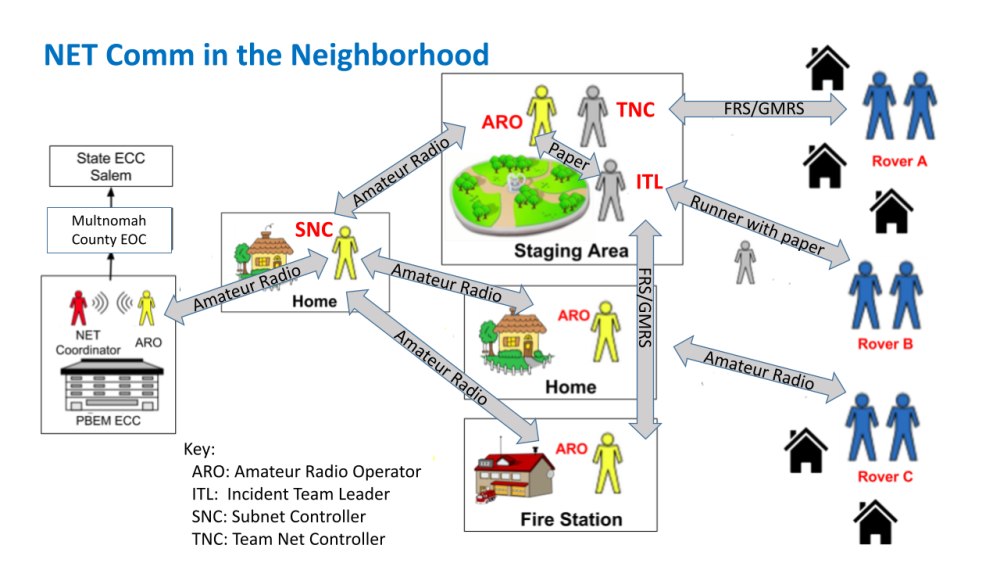Communications to the EOC via Amateur Radio
a. In the event mobile phone service is disrupted, NET AROs can attempt to communicate with the ECC via the VHF Amateur Radio system. Optimally, every team will have an Amateur Radio Operator and a backup operator in case the primary ARO is not available.In an emergency deployment, an ARO using VHF radio must accomplish three goals:
- First, the ARO must be able to communicate with the Incident Team Leader. The first assignment of every NET ARO is to support the Incident Team Leader and take direction from that person.
- Second, the ARO must have a means to contact the ECC.
- Third, the ARO must be prepared to relay messages between the Incident Team Leader and the ECC.
Team Leaders and AROs should work out ahead of time how to accomplish these three goals, to prepare an approach that best suits resources available to the NET, and to include that information in the NET’s Operation Plan. Examples:
1. In the event of a disaster, the NET ARO deploys to the NET Staging Area with a portable radio and works face to face with the Incident Team Leader, and relays messages with the portable HAM equipment (see “Staging Area” in figure below).
2. An ARO has radio equipment at home that is more powerful than any portable amateur radio. Therefore, the ARO plans to shelter in place during a disaster if safe to do so, use FRS/GMRS to communicate with the Incident Team Leader, and relay messages to the ECC with the radio equipment located in their home (see “Home” in figure below).
3. In another scenario, the NET ARO deploys to the nearest fire station to use the Fire Station Orange Go-Kit and antenna located there. The ARO reaches the Incident Team Leader via handheld GMRS and relays messages between the NET Staging Area and the ECC from the fire station (see “Fire Station” in figure below).
Whether an ARO deploys to the NET Staging Area, remains at home with radio equipment, or deploys to the nearest fire station to use the radio kit available is a decision that the ARO and TL must consider in operations planning. Any option that works best for the team is appropriate, so long as the ARO and the TL are in communication with each other (e.g. by FRS radio) so that messages can be relayed from the NET to the ECC.
